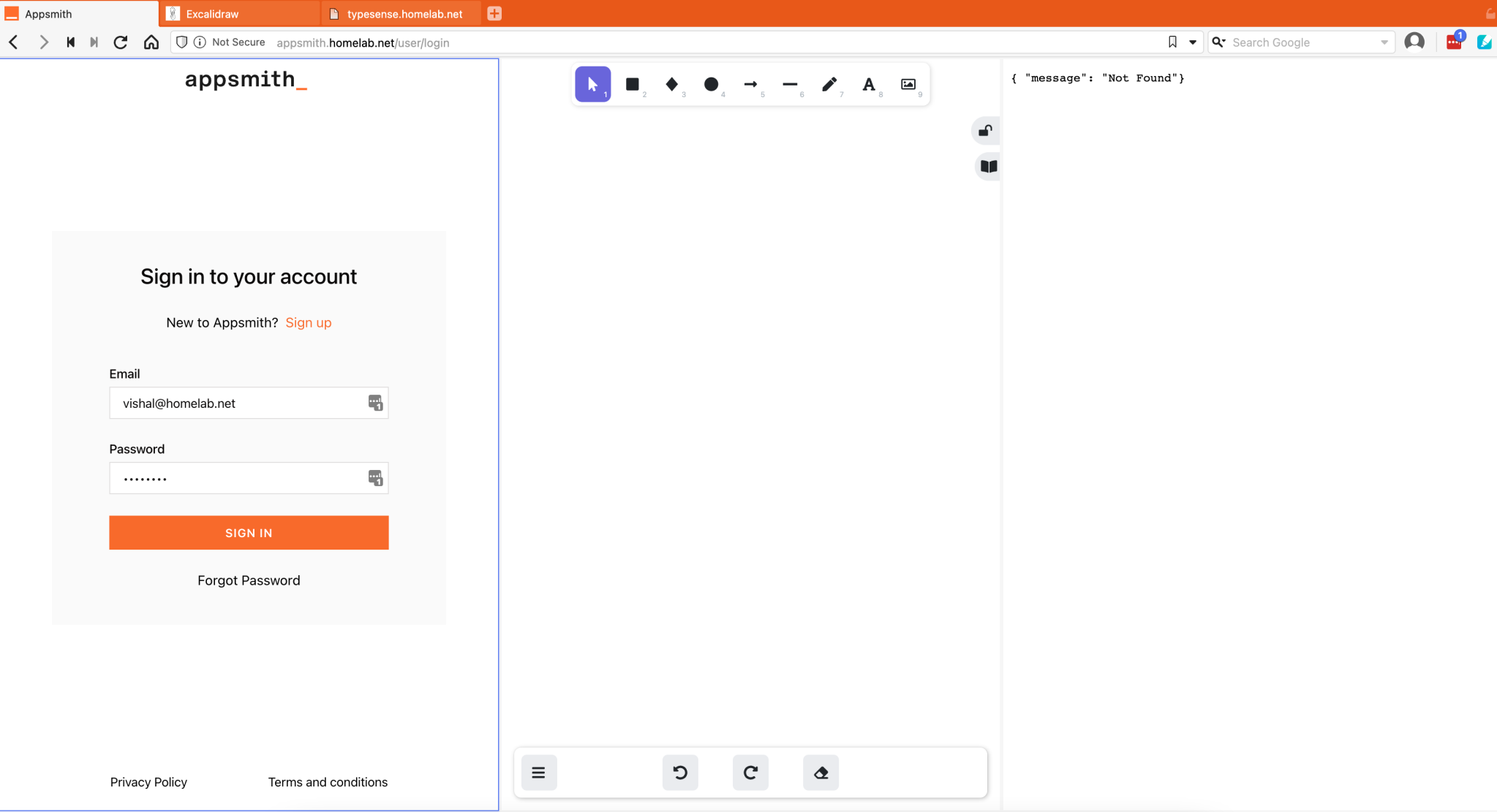As I explored and set up an increased number of FOSS software using containers(Docker and LXD) and virtual machines(Multipass) in my home lab environment, I realized the difficulty in remembering the different ports the applications and containers are running. The solution to address this problem was to have a Domain Name System for the local network, which works to resolve local and external addresses with a reverse proxy to redirect calls based on DNS resolution.
The below command lists the Docker Containers and ports the container are running on, the requirement is to create a domain for a home setup with domain homelab.net and access the containerized applications with appsmith.homelab.net; typesense.homelab.net; excalidraw.homelab.net
Let’s get the list of docker containers with port numbers
# get container names and port numbers
$ docker container ls --format "table {{.ID}}\t{{.Names}}\t{{.Ports}}" -a
CONTAINER ID NAMES PORTS
cbb2ac402270 appsmith 0.0.0.0:9001->9001/tcp, 0.0.0.0:70->80/tcp, 0.0.0.0:444->443/tcp
c9875323b989 typesense_typesense-1_1 0.0.0.0:8108->8108/tcp
c453288c8496 excalidraw 0.0.0.0:3001->80/tcp
5be5d33f1f50 k8s-control-plane 127.0.0.1:34589->6443/tcp
4140d2fbf7d5 mysql_nocodb_1 0.0.0.0:8082->8080/tcp
e7310461bee9 mysql_root_db_1 3306/tcp, 33060/tcp
9b56c33d45d5 meilisearch_ms_1 0.0.0.0:7700->7700/tcp
9ac6a0e16b0e mongo2 0.0.0.0:20002->27017/tcp
2aaf01d2233f mongo1 0.0.0.0:20001->27017/tcp
860b521f97dc mongo3 0.0.0.0:20003->27017/tcp
d8ad1ec3cab8 rethinkdb_rethinkdb_1 0.0.0.0:28015->28015/tcp, 0.0.0.0:29015->29015/tcp, 0.0.0.0:8081->8080/tcp
The containers and applications running on the local home network as shown above do not have a public domain name, the option was to look for setting up a DNS server with DNSMasq, and a reverse proxy using NGINX. The containers may not be the only use case scenario for local DNS servers with DNSMasq, there could be many others like accessing a local file share across devices; accessing applications from a mobile device, and sharing a printer.
DNSMasq - Dnsmasq provides network infrastructure for small networks: DNS, DHCP, router advertisement, and network boot. It is designed to be lightweight and has a small footprint, suitable for resource-constrained routers and firewalls.
NGINX - Reverse Proxy – A reverse proxy provides an additional level of abstraction and control to ensure the smooth flow of network traffic between clients and servers.
Let us get started with the implementation steps for DNSMasq and NGINX. The below steps are performed on Ubuntu 20.04 (Debian-based distro).
Before starting the installation of DNSMasq,
Step 1: Disable systemd-resolve which binds to port 53, the default port for DNSMasq
sudo systemctl stop systemd-resolved
sudo systemctl disable systemd-resolved
Step 2: Install DNSUtils, DNSMasq
sudo apt update && sudo apt install dnsmasq && sudo apt install dnsutils
Step 3: Create the DNSMasq configuration file
$ dnsmasq_conf="no-dhcp-interface=enp2s0f0
bogus-priv
domain=homelab.net
expand-hosts
local=/homelab.net/
domain-needed
no-resolv
no-poll
server=8.8.8.8
server=8.8.4.4"
$ sudo echo -e "$dnsmasq_conf" > /etc/dnsmasq.d/home-lab.net
$ sudo systemctl restart dnsmasq
Step 4: Add container DNS records in the file./etc/hosts. The records in the hosts file will be used by DNSMasq for client responses
$ sudo nano /etc/hosts
# add the below records to the hosts file
#Container DNS records
# appsmith
192.168.20.113 appsmith
# excalidraw
192.168.20.113 excalidraw
# typesense
192.168.20.113 typesense
Step 5: Restart DNSMasq service
$ sudo systemctl restart dnsmasq.service
Step 6: Install NGINX
$ sudo apt update && sudo apt install nginx
Step 6: To enable reverse proxy feature, create a new NGINX configuration file in sites-enabled directory
$ sudo nano /etc/nginx/sites-enabled/homelab.conf
server {
listen 80;
listen [::]:80;
server_name typesense.homelab.net;
location / {
proxy_bind 192.168.20.113;
proxy_pass http://localhost:3000;
}
}
server {
listen 80;
listen [::]:80;
server_name appsmith.homelab.net;
location / {
proxy_bind 192.168.20.113;
proxy_pass http://localhost:70;
}
}
server {
listen 80;
listen [::]:80;
server_name excalidraw.homelab.net;
location / {
proxy_bind 192.168.20.113;
proxy_pass http://localhost:3001;
}
}
The proxy_pass argument will forward all incoming client requests to app.homelab.net to the respective app. The IP address and port number can be easily changed.
Step 7 reload NGINX for the configuration to take into effect
$ sudo systemctl reload nginx
After a successful implementation, we will be able to access container applications using domain URLs as seen in the below screenshot with three panes first pane is appsmith ; second pane is excalidraw and third pane is typesense.

